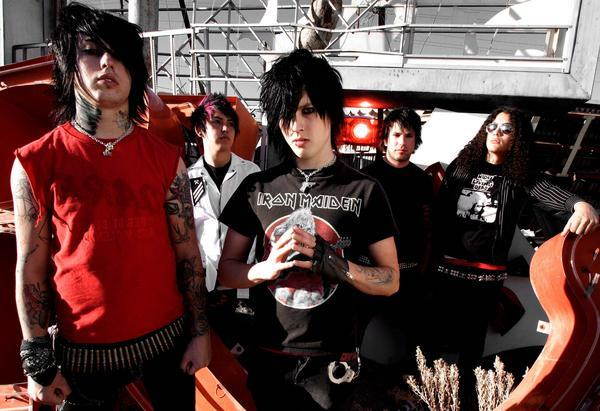Taser chairman defends stun gun's safety in Canada
British Columbia, May 12 (Reuters) - The chairman of Taser International Inc accused critics on Monday of spreading myths about the stun gun's dangers, saying there was no "magic bullet" to completely eliminate the risk of death during police use of force.
No studies have shown the devices can cause deaths, but that does not mean their use is entirely risk free, Taser co-founder Thomas Smith told a Canadian inquiry in Vancouver.
"There is no use-of-force option, ours included, that is a magic bullet," he said.
Smith said that Tasers, which are becoming increasingly popular with police forces, were still safer for both police and those being subdued than either firearms or batons. He emphasized his statements with videos of people being hit and pepper-sprayed by police officers.
Police use of the stun guns -- which incapacitate people with a 50,000-volt jolt of electricity -- has become controversial in Canada following the death a Polish immigrant during an arrest at Vancouver International Airport last year.
Images of Robert Dziekanski writhing on the floor after he was shot with the Taser were broadcast around the world, but the cause of this death has not been determined.
Smith called the incident tragic, but said he declined further comment until a medical examiner's investigation is completed.
Critics have accused Taser of pushing its product on the market without adequately testing for health risks such as heart failure, and for manipulating studies to downplay possible safety issues.
Taser use has been linked to over 290 deaths in North America since 2001, but the company argues there is no evidence the guns caused any fatalities and factors such as victim's drug use may have responsible.
Smith accused critics of basing their attacks on second-hand information. "I believe this is the most studied police technology out there today," he said.
Former British Columbia Attorney General Ujjal Dosanjh, who first approved police use of Tasers in the western Canadian province, said on Monday he felt he had been misled by claims the guns were entirely safe.
"I don't have much confidence in (Taser's) claims," Dosanjh said, echoing a recent call by the Canadian Medical Association Journal for a comprehensive independent study of police use of the weapons.
Dosanjh said he does not oppose police having the weapons available, but wants more limits on their use until questions over their safety are resolved.
Arizona-based Taser has waged a vigorous legal battle in defense of its safety claims, including suing at least two U.S. medical examiners who ruled the stun guns were the cause of deaths.
Smith declined to speculate if the company might take legal action against the British Columbia's inquiry if it does not like the outcome of the investigation.
Taser also sells the stun guns to the general public in the United States, but Smith said there are no plans to do that in Canada where such sales are illegal.
Canada to buy fewer F-35 fighters than thought
The Canadian government said on Monday it would buy 65 new F-35 Joint Strike Fighters, a figure lower than the 80 planes that had widely circulated in the media.
"One of the reasons there will be fewer of the new fighters is we anticipate the new fighters will have significantly greater capacity than existing fighters," Prime Minister Stephen Harper told a news conference.
He was speaking in Nova Scotia as he unveiled what he called the Canada First Defence Strategy, involving C$30 billion ($30 billion) in projected new military spending for the next 20 years.
The F-35s will replace Canada's CF-18s, which are scheduled to reach the end of their working lives in 2017-20. Canada bought 138 of them in the 1980s and now has 98, 80 of which are being refurbished.
Lockheed Martin Corp will make the F-35s. The Joint Strike Fighter program is being funded by the United States, Canada and seven other countries.
Canada dollar inches higher in lackluster session
The Canadian dollar rose slightly against the U.S. dollar on Monday, but remained stuck in a tight range, while bonds rose as traders took advantage of lower prices after last week's big selloff.
The Canadian dollar closed at C$1.0044 to the U.S. dollar, or 99.56 U.S. cents, up from C$1.0056 to the U.S. dollar, or 99.44 U.S. cents, at Friday's close.
The currency spent the session in a range of C$1.0076 to C$1.0025 to the U.S. dollar.
Part of that was due to muted trading as many European markets were closed for holidays, but it was also because traders were just not sure to do with the currency, said David Watt, senior currency strategist at RBC Capital Markets.
"Short-term studies say that the Canadian dollar should rise, but then medium-term studies say it's a challenging environment for the Canadian dollar," he said. "That's why we can't break out of this range and even the most light of resistance or support levels can't be broken."
Much of the uncertainty comes from doubts about the U.S. economic outlook and how that will affect Canada, he said.
The U.S. economy takes in over three-quarters of Canadian exports.
The market did not react to Canadian data that showed the price of new homes edged up 0.2 percent in March, compared with a 0.3 percent rise in February, as it was in line with market expectations.
Year-over-year price growth slowed to 6.1 percent from 6.2 percent in February.
























No comments:
Post a Comment